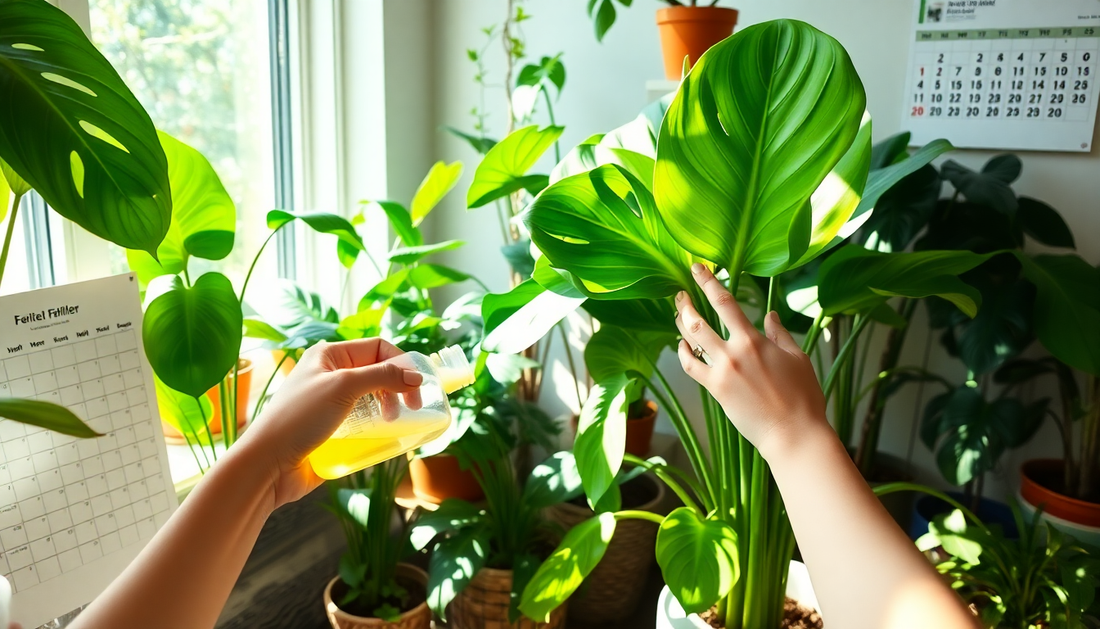
How Often to Fertilize Houseplants: A Gardener's Guide
Understanding Your Houseplant's Needs
Embarking on the journey of keeping houseplants is both thrilling and educational, offering a wonderful way to bring a touch of nature into our homes. However, one of the common questions that arises is: how often should we fertilize our houseplants? Understanding the unique needs of each plant is crucial, as no two plants are the same, and their nutrient requirements can vary widely.
Houseplants require different levels of fertilization based on their species, growth stage, and environmental conditions. Generally, most houseplants benefit from regular feeding during their active growing season, which usually ranges from spring through summer. During these months, aiding them with the right nutrients ensures lush growth and robust health. Nonetheless, come fall and winter, these green companions slow their growth, entering a period that resembles dormancy, hence reducing their need for feeding.
Before determining how often to fertilize houseplants, it's essential to do some research on the specific plant species you have. Many houseplant enthusiasts might find themselves guilty of over-fertilization. While plants need nutrients, like nitrogen, phosphorus, and potassium, too much can cause more harm than good. When fertilizers accumulate in the soil, they can lead to nutrient burn, characterized by brown leaf tips and poor plant health. Thus, knowing when to step back is equally as important as knowing when to fertilize.
The Active Growing Season: Spring and Summer
Spring marks the beginning of new life for houseplants, a time when they burst into growth mode. This period is ideal for bulk amounts of feeding. During these months, fertilizing every two to four weeks can significantly benefit most houseplants. It's during this time that plants utilize the nutrients more efficiently, aiding in leaf development and overall vitality. A well-balanced liquid fertilizer usually suffices, offering an even distribution of nutrients to the roots.
Additionally, spring is a crucial time for undertaking some basic plant care rituals like repotting and pruning. Fertilizing consistently during this period can also support plants in adapting to these changes. However, even amidst the growing season, some plants, such as succulents and certain cacti, have lower nutrient requirements. For these species, once every two months would suffice.
Summer follows the flourishing phase of spring, and plant care routines continue to revolve around regular feeding. Keeping an eye on the individual needs of each plant will denote how often to adjust the fertilizer concentration or frequency. Providing a diluted fertilizer solution can help those tentative about over-fertilizing while still ensuring that your houseplants reap all the benefits of their growing season.
Slowing Down: Fall and Winter Needs
The natural cycle of houseplants typically leads to a slowdown in fall, moving into dormancy by winter. During these seasons, fertilization should be minimized or halted altogether. Since houseplants use significantly less energy and nutrients during these months, excess fertilizer will simply sit in the soil, potentially harming the plants.
Recognizing this transition period requires a keen eye on physiological changes in plants, such as reduced growth rate or shedding of old leaves. These are signs that your houseplants have slowed their physiological processes, and feeding them should be limited to once every one to two months, or even withheld until spring.
It’s also an excellent time to focus on other plant care aspects, like light optimization and proper hydration, ensuring your plants are happily preserved through these lean months. Understanding the natural cycles of dormancy and growth can make you a more adept plant parent, leading to healthier houseplants year-round.
Choosing the Right Fertilizer
Deciding on the right fertilizer is just as critical as determining your fertilization schedule. Liquid fertilizers are the go-to choice for houseplant enthusiasts due to their ease of application and quick nutrient delivery. Conversely, slow-release granular fertilizers are favored for those who prefer a hands-off approach, releasing nutrients gradually over weeks or months.
Organic options are also gaining momentum among environmentally conscious gardeners. Fertilizers like fish emulsion or seaweed extracts provide a more natural nutrient boost. These not only feed the plants but also enrich the soil with organic matter. Regardless of the choice, lower concentrations are always recommended initially, allowing plants to adjust without the risk of nutrient burn.
Should your plants exhibit signs of distress, such as pale leaves or stunted growth, soil testing can be an invaluable tool. Testing will give insight into the nutrient levels of the soil, allowing you to adjust the fertilization regime accordingly. The ultimate goal is to mimic the plant's natural habitat as closely as possible, ensuring they thrive indoors.
Monitoring and Adjusting Your Routine
No two plants are the same, and adapting your fertilization regimen is vital for houseplant health. Regularly monitoring and being attuned to changes is key to a healthy plant-parent relationship. Consider factors such as the plant's age, size, and overall health when deciding on fertilization frequency.
The beauty of growing houseplants lies in their ability to teach patience and observation. Beginners often learn that less can indeed be more when it comes to fertilization. By keeping a keen eye on leaf color, growth patterns, and overall vigor, you can make informed adjustments to your plant care routine.
Finally, always remember that successful fertilization is not just about following a schedule, but also responding to the dynamic needs of plants as they grow. Celebrate the little victories with your houseplants as they thrive, transforming your living space into a lush, joyful green haven.
